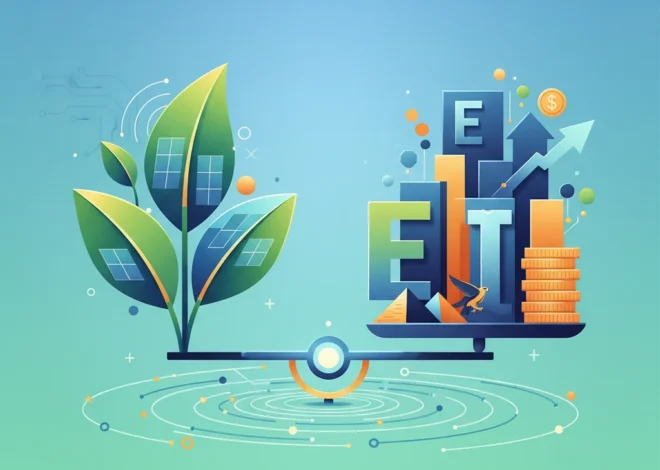
Forging the Future: Is H2 Green Steel’s $6.5bn Bet the New Blueprint for Green Industrial Investing?
The Decarbonization Dilemma: From Moonshots to Masterplans
In the global race to net-zero, heavy industry remains one of the most formidable mountains to climb. Steelmaking, the backbone of the modern economy, is responsible for a staggering 7-9% of global carbon emissions. For decades, the solution seemed locked away in the realm of science fiction. But a Swedish venture, H2 Green Steel, is not just proposing a solution; it’s building it on a colossal scale, backed by a financial war chest that has the world of finance and investing taking serious notice.
The company recently secured a monumental €4.2 billion in debt financing, alongside €300 million in equity, bringing its total funding to an eye-watering €6.5 billion. This isn’t just another venture capital-fueled dream. This is a meticulously planned industrial project that aims to redefine how we produce steel and, more importantly, how we finance the green transition. But as investors watch Europe’s other green champion, battery maker Northvolt, struggle with production delays and immense cash burn—a phenomenon some are calling the “Northvolt curse”—a critical question emerges: Is H2 Green Steel different? The answer lies not in a revolutionary new technology, but in a brilliantly pragmatic business model that could become the new blueprint for decarbonizing the global economy.
Technology vs. Execution: Learning from the “Northvolt Curse”
To understand the investor enthusiasm surrounding H2 Green Steel, one must first look at its Swedish compatriot, Northvolt. Lauded as Europe’s answer to Asian battery dominance, Northvolt embarked on a mission to develop and scale a new generation of lithium-ion batteries. This is a high-risk, high-reward technology play. It involves perfecting novel chemistry, inventing new manufacturing processes, and racing against a rapidly evolving technological frontier. While noble, this path is fraught with peril, leading to delays and a voracious appetite for capital.
H2 Green Steel is playing a different game entirely. Its core proposition—producing steel using green hydrogen instead of coking coal—is not a technological gamble. As the company’s CEO, Henrik Henriksson, points out, “This is not a technology play at all… We are building a big, classic industrial plant” (source). The process, known as direct reduced iron (DRI) using hydrogen, has been understood for decades. The innovation isn’t in the “what,” but in the “how”: integrating green hydrogen production at an unprecedented scale directly with the steel mill, powered by the abundant renewable energy of northern Sweden.
This shifts the primary risk for investors from the realm of R&D to the domain of project management. It’s a challenge of execution, not invention. For the world of finance, this is a much more familiar and bankable proposition. Below is a comparison of the two models from an investment perspective:
| Factor | Northvolt (The Technology Play) | H2 Green Steel (The Execution Play) |
|---|---|---|
| Primary Risk | Technology & Scaling Risk (Can we invent and mass-produce it efficiently?) | Execution & Project Risk (Can we build this massive facility on time and on budget?) |
| Core Technology | Developing novel, high-performance battery cells. | Applying a known industrial process (DRI) at a new scale with a green input (hydrogen). |
| Market Demand | High, but dependent on performance, cost, and competition from established players. | Secured via long-term, legally binding offtake agreements for a premium product. |
| Financing Model | Primarily venture capital and corporate equity, focused on growth potential. | Dominated by project finance debt, backed by guaranteed future revenue streams. |
| Investor Profile | Venture capitalists, growth equity funds, and strategic partners betting on a technological breakthrough. | Infrastructure funds, commercial banks, and export credit agencies underwriting a large-scale construction project. |
This distinction is fundamental. While both are capital-intensive, H2 Green Steel’s model significantly de-risks the proposition for the traditional banking sector, which values predictability and secured revenue over speculative technological leaps. Beyond the Boardroom: Sweden's Blueprint for Investor Power in the Digital Age
The Financial Architecture of a Green Behemoth
The record-breaking funding round is a masterclass in modern project finance. By pre-selling more than half of its initial annual volume of 2.5 million tonnes in legally binding, five-to-seven-year contracts to customers like Mercedes-Benz, Scania, and Cargill, H2 Green Steel has done something remarkable: it has guaranteed a significant portion of its future revenue before the first slab of steel has even been forged (source).
This is the language that the conservative world of banking and institutional investing understands. It transforms a speculative venture into a calculable asset. These offtake agreements, which include a “green premium” for the carbon-free steel, act as collateral, assuring lenders that there is a committed market waiting for the product. This approach has allowed the company to attract not just equity from impact investors, but also massive, traditional debt from institutions that are typically risk-averse. This successful integration of project finance principles into the green tech space could unlock trillions of dollars needed for the energy transition, moving beyond the limitations of the venture capital and stock market ecosystems.
The implications for the broader economy are profound. This model demonstrates how Europe can compete in the 21st-century industrial landscape—not by trying to onshore low-cost manufacturing, but by leveraging its technological expertise, regulatory frameworks (like carbon pricing), and sophisticated financial markets to pioneer high-value, green industrial production. The Trillion-Dollar Question: Is High Public spending the Real Threat to Our Economy?
The Economics of a Green Premium
Of course, H2 Green Steel’s product will be more expensive—initially around 25% more than traditional steel. In a typical commodity market, this would be a death sentence. However, the economics of decarbonization are changing the rules. This “green premium” is a price that a growing number of major corporations are willing to pay for several reasons:
- Supply Chain Decarbonization: For an automaker like Mercedes-Benz, the steel in a car represents a huge chunk of its “Scope 3” emissions (emissions from its supply chain). Using green steel is one of the fastest ways to make credible progress towards their own net-zero targets.
- Brand and ESG Demands: Consumers and investors are increasingly demanding sustainable products. A “made with green steel” label becomes a powerful marketing tool and a key metric for ESG (Environmental, Social, and Governance) investing.
- Regulatory Hedging: With mechanisms like the EU’s Carbon Border Adjustment Mechanism (CBAM), the cost of carbon is being priced into imported goods. This will gradually erode the cost advantage of conventionally produced steel, making the green premium smaller over time.
This dynamic creates a virtuous cycle. As more industrial giants commit to offtake agreements, it provides the financial certainty for more green steel projects to be built, increasing supply and eventually, through economies of scale and technological learning, bringing down the cost. This is a market-driven approach to industrial transformation, where financial technology and forward-thinking economics are as crucial as the engineering itself.
The Road Ahead: Execution is Everything
Despite the sound strategy and financial backing, the path forward is not without challenges. The primary risk, as highlighted, is execution. Building one of the world’s largest industrial facilities in Boden, northern Sweden, is a monumental undertaking. Timelines, budgets, and supply chains will be tested. Any significant delay could have serious financial repercussions, a lesson Northvolt has learned the hard way.
Furthermore, the entire business model is predicated on the availability of vast amounts of cheap, reliable, and green electricity. While northern Sweden is one of the best locations in the world for this, the project will place immense new demands on the local grid, a factor that cannot be overlooked. The long-term stability of energy prices remains a critical variable in the complex equation of green steel economics.
Ultimately, H2 Green Steel’s journey is more than a story about a single company. It is a real-time case study for the future of industrial investing. It suggests a shift away from pure tech speculation towards a more robust model of de-risked, large-scale project execution. If H2 Green Steel succeeds, it will not only deliver a decisive blow to global carbon emissions; it will also forge a new, bankable path for the trillions of dollars in private capital needed to build the green economy of tomorrow. The stock market and private investors alike will be watching not for a magical breakthrough, but for the steady, disciplined hum of a well-executed industrial masterplan. Geopolitical Tremors: What US Military Threats in Venezuela Mean for Global Markets


